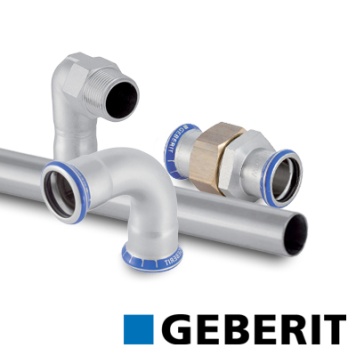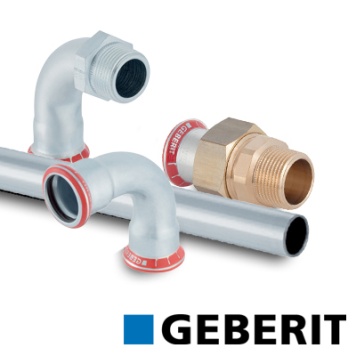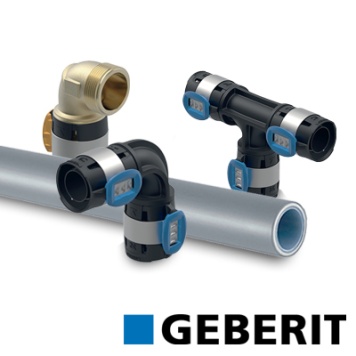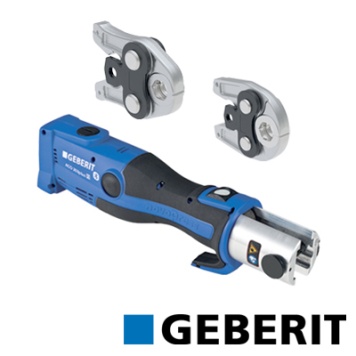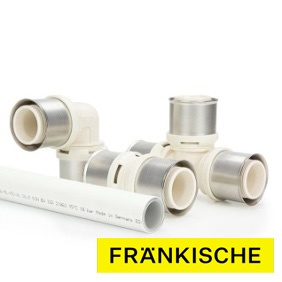- Home
- Press Fit
Press Fit
Press Fit systems are revolutionising the way pipes are connected in various industries, from plumbing to HVAC and beyond. Known for their efficiency, reliability, and ease of installation, press fittings have become a popular choice for both seasoned professionals and those new to pipework. In this guide, we’ll explore everything you need to know about Press Fit systems, answering common questions and providing insights to help you decide if they’re the right choice for your project.
What Is a Press Fitting?
Press fittings are components used to join pipes in a secure and leak-proof manner without the need for welding, soldering, or threading. Instead, they rely on specialised pressing tools that compress the fitting onto the pipe, creating a durable and long-lasting connection.
Available in a variety of materials like stainless steel, copper, and plastic, press fittings cater to a range of applications, from residential plumbing to industrial systems.
How Does a Press Fitting Work?
The mechanism behind press fittings is straightforward yet highly effective. Each fitting features a rubber O-ring that ensures a watertight seal. During installation, the pressing tool crimps the fitting onto the pipe, deforming the metal or plastic to lock the components together while compressing the O-ring to form a secure seal.
The process is quick, clean, and requires minimal tools, making it an excellent alternative to traditional pipe-joining methods.
What Are the Benefits of Using Press Fit Systems?
- Ease of Installation: Press fittings eliminate the need for open flames, threading machines, or adhesives, reducing the risk of accidents and speeding up installation times.
- Reliability: The O-ring ensures a robust and leak-proof connection, even under high pressure.
- Versatility: With options for different pipe materials and compatibility with water, gas, and chemical systems, press fittings are incredibly versatile.
- Cost-Effective: Faster installation means reduced labour costs and the durability of press fittings minimises long-term maintenance expenses.
- Eco-Friendly: By avoiding adhesives and flux, press fittings are a cleaner option for the environment.
Are Press Fittings Reliable?
Absolutely. Press Fit systems are designed to withstand high pressures and a wide range of temperatures, making them suitable for demanding applications. The key to their reliability lies in proper installation and selecting fittings that are compatible with your piping material and intended use.
Common Applications of Press Fit Systems
Press Fit systems are widely used in:
- Residential Plumbing: For clean and efficient water distribution.
- Heating and Cooling Systems: Ideal for HVAC installations.
- Gas Distribution: With specific fittings certified for gas use.
- Industrial Applications: Such as chemical transport and process piping.
What Are the Different Press Fit Profiles?
Press Fit profiles (also known as pressing contours) are essential in determining how a fitting interacts with the pipe during installation. Each profile has distinct features tailored to specific systems, pipe materials, and applications. Here’s a breakdown of the most common Press Fit profiles:
M Press Profile
The M profile is one of the most widely used in Press Fit systems. It features rounded, wave-like grooves that are designed to compress the pipe and fitting evenly during pressing. This ensures a strong, leak-proof connection.
Applications:
- Plumbing (hot and cold water systems)
- Heating systems (e.g., underfloor heating)
- Industrial applications for non-aggressive fluids
Pipe Compatibility:
- Stainless steel
- Copper
- Carbon steel
Example Systems:
- Geberit Mapress
- Pegler Yorkshire
- Sanha Nirosan
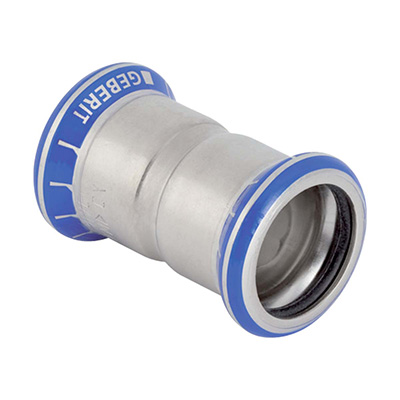

V Press Profile
The V profile is characterised by sharper, angular grooves compared to the M profile. This profile creates a concentrated pressing force at key points of the fitting, making it ideal for specific industrial and high-pressure applications.
Applications:
- Gas installations
- Chemical transport
- High-temperature systems
Pipe Compatibility:
- Stainless steel
- Carbon steel
- Multilayer composite pipes
Example Systems:
- Conex
- Viega ProPress
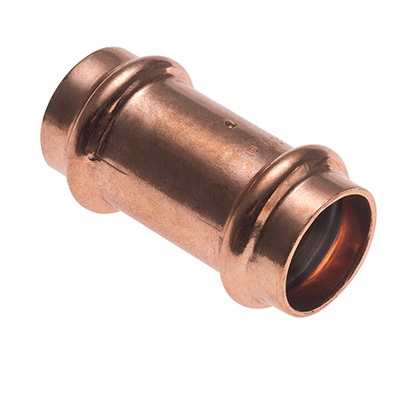

TH Press Profile
The TH profile is a hybrid design often used for specialised applications. It combines elements of both M and V profiles, offering flexibility for a wider range of pipe types and system demands.
Applications:
- Compressed air systems
- Drinking water systems
- Fire protection systems
Pipe Compatibility:
- Multilayer pipes
- Plastic pipes
Example Systems:
- Frankische Alpex F50 PROFI
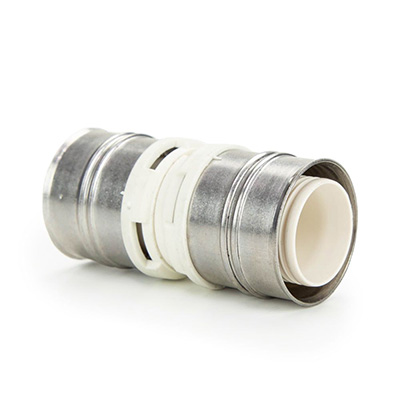

F Press Profile
The F profile is less common but is used in specific markets or for unique piping systems. It features shallow grooves and is often associated with plastic and multilayer pipes.
Applications:
- Low-pressure systems
- Domestic water applications
Pipe Compatibility:
- Plastic pipes
- Multilayer pipes
Example Systems:
- Frankische Alpex L (can also be used on Frankische Alpex F50 PROFI)
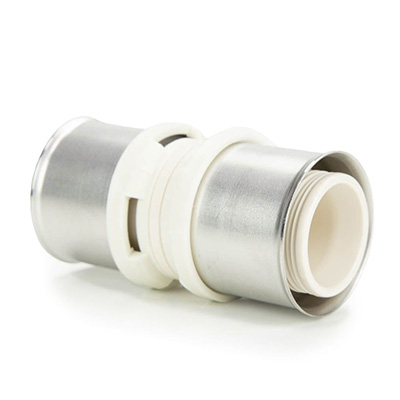

Basic Installation Guide for Press Fit Systems
Installing Press Fit systems is straightforward and requires minimal tools, making it an efficient choice for professionals and beginners alike. Here's a step-by-step guide to ensure a secure and leak-proof connection:
Tools and Materials Required
- Press Fittings (ensure compatibility with your pipe material and profile, e.g., M, V or TH)
- Pipes (multilayer, copper, stainless steel, etc., as per your application)
- Pressing Tool with compatible jaws for the selected profile
- Pipe Cutter
- Deburring Tool or Reamer
- Marking Pen
- Measuring Tape
Step-by-Step Installation Process
- Plan the Installation
- Measure and mark the pipe lengths required for your system.
- Ensure you have the correct fittings and pressing profiles for the job.
- Cut the Pipe
- Use a pipe cutter to cut the pipe to the required length. Ensure the cut is clean and square to allow a proper fit with the pressing sleeve.
- Deburr and Chamfer the Pipe
- Deburr the inside and outside edges of the pipe using a deburring tool. This step prevents damage to the O-ring and ensures a smooth insertion into the fitting.
- Mark the Insertion Depth
- Insert the pipe into the fitting until it reaches the stop point.
- Use a marking pen to draw a line on the pipe at the edge of the fitting. This mark serves as a visual guide to ensure the pipe is fully inserted before pressing.
- Position the Pressing Tool
- Select the correct pressing jaw or ring for the fitting's profile (e.g., M, V or TH).
- Place the pressing tool over the fitting’s stainless steel sleeve or designated pressing area.
- Press the Fitting
- Activate the pressing tool to compress the fitting onto the pipe. The tool applies even pressure to create a leak-proof seal.
- Release the tool and visually inspect the connection to ensure it is complete and aligned with the marked insertion depth.
- Test the System
- After completing the installation, pressure-test the system according to the manufacturer's guidelines to check for leaks and ensure the connections are secure.
Tips for a Successful Installation
- Always check which jaws & tools are certified/recommended by the pipe & fitting manufacturer.
- Check the condition of pressing tools and jaws before starting the job.
- Avoid using damaged or deformed pipes and fittings.
- Follow local regulations and standards for plumbing and heating installations.
Frequently Asked Questions
Can You Use Press Fit Systems for Gas?
Yes, but only with fittings specifically designed and certified for gas applications. Always check the manufacturer’s specifications and ensure compliance with local regulations.
How Long Do Press Fit Connections Last?
When installed correctly, press fit connections can last decades, often matching or exceeding the lifespan of the pipe itself.
What Maintenance Is Required for Press Fit Systems?
While press fit systems are low-maintenance, periodic inspections can ensure the integrity of connections, especially in high-pressure or high-temperature applications.
Conclusion: Why Choose Press Fit Systems?
Whether you’re a professional looking to streamline your workflow or a newcomer exploring modern plumbing solutions, Press Fit systems offer a reliable, cost-effective, and environmentally friendly option. With the right tools and fittings, you can achieve fast, secure, and long-lasting results.
For more information on Press Fit fittings, tools, and accessories, explore our product range here.
If you require any further information, our excellent customer service team is here to help so please call us on 01794 835835.


